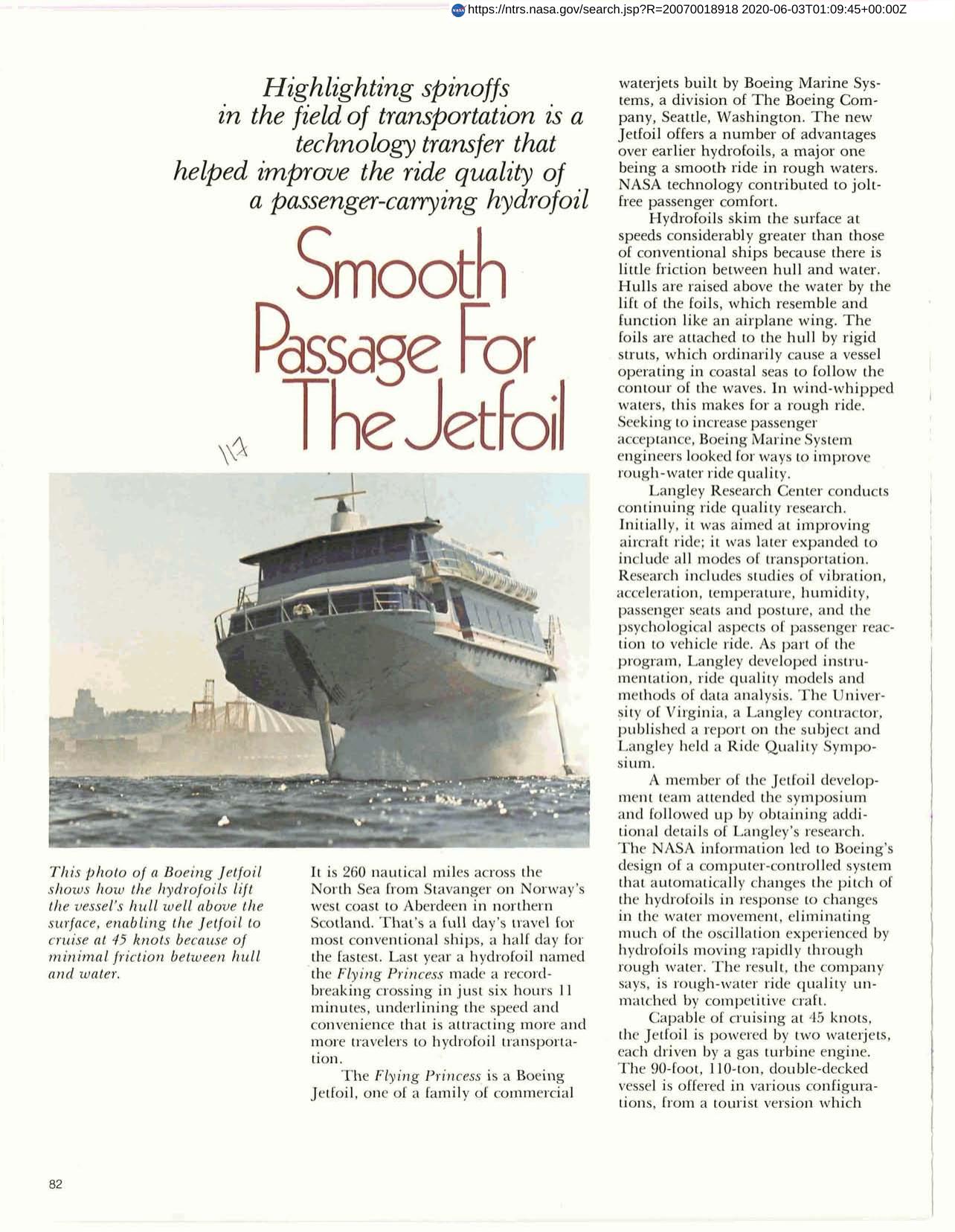
Smooth Passage for the Jetfoil
NASA information led to Boeing's design of a computer controlled system that automatically changes the pitch of hydrofoils in response to changes in the water movement eliminating much of the oscillation experienced by hydrofoils moving rapidly through the water. Result, a rough-water quality ride unmatched by competitive craft. Capable of cruising at 45 knots, jetfoil is powered by two waterjets each driven by a gas turbine engine. The 90-foot 110-ton double decked vessel is offered in various configurations from a tourist version which carries 190-250 passengers and their luggage to a short haul commuter version which can accommodate up to 400.
Full article: http://hdl.handle.net/hdl:2060/20070018918

Smooth Passage for the Jetfoil

Smooth Passage for the Jetfoil













